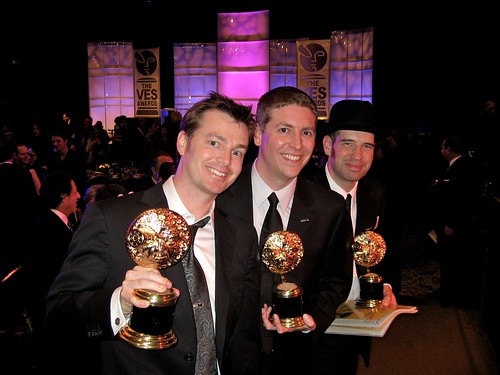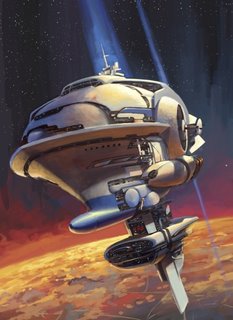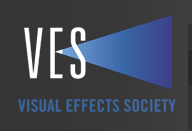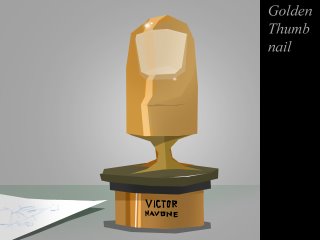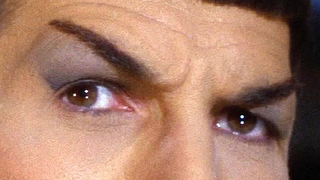
I wanted to do a post about eyebrows after seeing
Carlos' post on his blog. If you haven't read it, you might as well do it now, since I'm not covering the same material here. Eyebrows are one of the most important parts of facial animation. Sure, the eyes are the "windows to the soul", but the brows are, like, the window dressing. Okay, that's a crappy stretch of the metaphor. Eyebrows are hugely expressive, though, and can go a long way towards communicating your character's thoughts and emotions. They are capable of bigger shape changes than the eyes alone, and often read better from a distance. Brows also change the shape of the eye; make the shape of your character's upper lids echo the shape of the brows so they feel connected and fleshy.
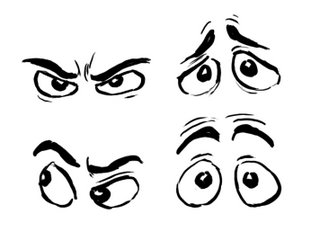
If your character doesn't have brows (such as the characters in Cars) then you must use the upper lids to mimic the behavior of brows.
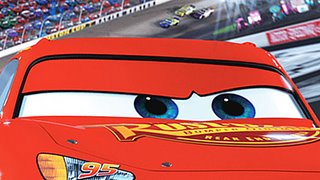
One of my favorite actors to look at for brow expressions is George Clooney (and let's face it, he's pretty easy on the eyes all around!). George has dark, prominent brows and his white scleras stand out against his dark skin, making for really clear, graphic expressions. He also has great comic timing, and when he's directed by the Coen Brothers you end up with some really entertaining performances, like this scene from "Intolerable Cruelty" (click picture to play movie):
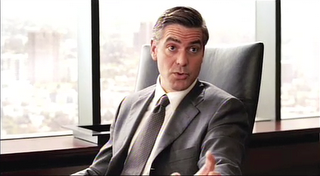
See how clear his attitudes are and how the brow changes lead his turns. He actually does very few gestures and pose changes; most of the acting is in the brows, eyes and the angle of the head. I also love how the wrinkles in his forehead echo the shapes of his brows and emphasize the accents. Here are some choice frames:
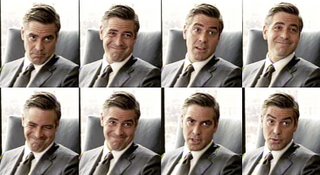
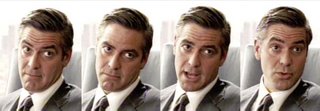 Animation tip: have your brow animation precede any head or body movement. Otherwise the brow action will be lost in the movement and the audience will miss it. This technique also helps to make the character look like he's thinking before he's acting.
Animation tip: have your brow animation precede any head or body movement. Otherwise the brow action will be lost in the movement and the audience will miss it. This technique also helps to make the character look like he's thinking before he's acting.
Below are some stills from a scene in Ratatouille (animated by Michal Makarewicz), in which the deposed chef Skinner tastes the titular dish. Skinner is largely hidden behind the table and his sunglasses, so his brows end up doing much of the acting. You can clearly see the sequence of his emotions in his brow: angry determination, surprise, ecstasy, and back to anger.

And here are some interesting behavioral facts about brows:
- As the pitch of the voice raises the brows go up
- As the pitch of the voice lowers, the brows likewise drop
- When asking a question where the answer is already known, the brows raise
- When asking a question where the answer is truly unknown, the brows lower
- Spontaneous facial expressions (surprise, fear, pain, etc.) tend to be symmetrical, where as expressions we choose to make (curiosity, suspicion, contempt, etc.) can be more asymmetrical.
These are just trends, not rules, but they're a good starting point and they work well. Try them!
I'm not going to break down all the muscles involved in brow animation, but I'd like to give special mention to the Corrugator muscle, which pulls the brows together in the middle and results in a tell-tale furrowing above the nose. This is important for intense expressions:
- Anger
- Fear
- Sadness
- Concentration
- Stress
- Disgust
- Deep thought
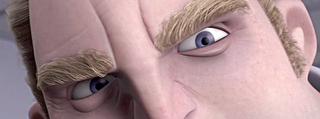
Note that you can't raise your brows and furrow them at the same time. You
can raise the inner brows and furrow them, which gives a sad expression, and usually results in a twisted fleshy mass as the muscles pull the skin in different directions. It's a good idea to study facial anatomy to help you understand how the muscles of the face work. You don't have to memorize all the muscles' names (I haven't) but it will help you understand how to make more natural expressions and movements. It's also a good idea to study behavioral science to give you some insight into when, how and why humans make the faces they do. Here is some recommended reading on these topics:
The Artist's Complete Guide to Facial Expression by Gary Faigin
Unmasking the Face by Paul Eckman and Wallace Friesen
Manwatching by Desmond Morris
I hope you have enjoyed
browsing this article.
